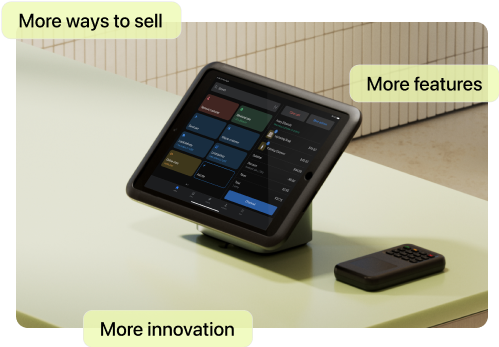You have a great business idea—a device that trains pets to do housework. You’ve tested a prototype on your own pets, and it works better than expected. You, however, already have a full-time job and can’t devote the time needed to get your idea off the ground. Instead of starting a business, you decide to sell your idea.
Here’s how to sell your own idea—and how to protect your intellectual property from being stolen during the process.
How to sell an idea
- Research your idea
- Develop your idea
- Identify prospective buyers
- Protect your idea
- Choose a monetization strategy
- Prepare your sales materials
Truly new ideas are surprisingly rare. Many large companies have full-time employees focused solely on innovation: They’re intimately familiar with the business’s industry, target audience, and technical capabilities, and odds are high they’ve considered an idea like yours and passed on it for some reason.
This doesn’t mean you can’t sell ideas—you’ll just need to set realistic expectations and boost your chances with a persuasive sales pitch. Here’s how to sell your idea in seven steps:
1. Research your idea
Do a little research to see if your idea has already been tried. For example, if you have an idea for a laser-powered cookie cutter, you’ll find that ambitious bakers have already given it a shot. According to one MIT student, “Laser-cut cookies [taste] like burning cardboard.”
If your idea already exists, ask yourself the following questions:
-
If there are problems with your idea, can you fix them? Many promising ideas fail due to issues with production, distribution, or product usage. They can be too expensive to make and ship, not work for the intended application, or face regulatory barriers. If you can solve the problem that has kept an idea off the market, you can sell your novel solution along with the original idea.
-
Can you improve on the application of your idea? Let’s say the market doesn’t currently offer an affordable laser cutter specifically designed for baking—audiences are using high-priced all-purpose laser cutters instead. If your cookie-specific product could retail for $80 instead of $800, you can pitch your idea for a focused application of laser-cutting technology.
-
Could a related idea provide more value? Try running a search for the general concept related to your idea. If you Google “custom cookie cutter machine,” for example, you’ll find instances of bakers using 3D printers to create custom versions of traditional hand-held cookie cutters. Then ask yourself the first two questions again: If you can create a low-cost 3D printer designed for cookie-cutter production, you might be able to sell this application instead.
2. Develop your idea
Potential investors often balk at purchasing unproven ideas, so provide proof of concept and supporting research. You don’t need to develop a full business plan, but you do need enough data to demonstrate profit potential. Develop your idea with the following steps:
-
Research target audiences. Target audience research demonstrates demand for your idea. If you have a gaming app idea, you might compile data about gaming app usage and who buys similar apps, how they use them, what they’re willing to pay, and what factors motivate purchases.
-
Research competitors. Research successful app companies to identify the going rate for your product type. Competitor research also helps you determine what makes an app idea successful and identify audience needs that existing solutions don’t meet.
-
Build and test a prototype. A prototype proves a product is manufacturable and lets you demonstrate innovative features. You can also use prototypes to test products under different conditions to gather real-world performance data.
-
Estimate production costs. An idea isn’t worth much unless it can make a profit. Use your prototype and industry research to estimate production costs at scale.
3. Identify prospective buyers
Once you’ve determined what you’re selling, you’re ready to find companies or entrepreneurs interested in purchasing or licensing your idea. Known as outbound lead generation, this process involves researching the market for your idea, identifying and listing potential buyers, and researching individual prospects.
Say you have a one-click dumpling delivery app idea—here’s what your lead generation process might look like:
-
Research the market for your idea. Identify industries that could profit from your idea and read up on them, consulting trade publications, industry overviews, and market databases. Your goal is to learn about the industry’s major players, current challenges, and emerging trends.
-
Identify target prospects. List potential buyers for your idea. For an app concept, you might find investors by browsing app stores (like the Google Play Store and the Apple App Store) and identifying developers of similar apps.
-
Qualify your leads. Research your potential buyers to determine a prospect’s likelihood of conversion, considering company size, current products, and purchase history. Although large companies typically have bigger budgets, reaching their decision-makers is often difficult—so it can help if you have a personal contact at a business. Similar product lines and a history of purchasing ideas from inventors and entrepreneurs can also be a promising sign.
-
Research qualified leads. Gather information on qualified sales prospects, keeping your limitations in mind: If your qualification process generates 500 promising leads, apply stricter criteria to arrive at a number of targets you can feasibly research and approach. Then identify decision makers, review sales and profit trends, and read up on mission, vision, and values. You’ll use this information to customize your sales pitches later on.
4. Protect your idea
Companies and entrepreneurs can steal ideas, so protect your intellectual property before beginning the pitch process. Here are some options:
-
Use a non-disclosure agreement (NDA). An NDA is a legal document that protects the confidential information you share with the signing party.
-
File a patent application.Patents establish ownership of an invention and grant the owner exclusive rights to produce or sell the patented item. Filing typically is complicated, so contact a patent attorney for help.
-
Apply for copyright or trademark. If your idea could be considered an original creative work or a branded element (like a logo or phrase), you could try protecting it by filing for a trademark or copyright.
5. Choose a monetization strategy
Determine how you’d like to be paid. Common payment options include:
-
Upfront payment. You can request a one-time upfront payment in exchange for the rights to your idea or an advance on future royalty earnings.
-
Royalties. Royalty payments depend on product sales. If you agree to royalty terms, you’ll earn a percentage of the price of each item sold.
-
Annual minimum. Annual minimums guarantee you a yearly payment independent of sales volumes. They’re often combined with royalty agreements, meaning you’ll earn at least the value of the annual minimum and additional payments when total royalty earnings exceed that threshold.
6. Prepare your sales materials
Prepare an introductory letter, a sell sheet, and materials for a professional presentation. Here’s an overview of each:
-
Introductory letter. An introductory letter is like the cover letter you submit in a job application. Use it to introduce yourself, explain your reasons for outreach, provide your contact info, and outline next steps—including how a business can reach you and how (and when) you’ll follow up with them.
-
Sell sheet. Create a sell sheet—a one-to-two-page document that identifies the market for your product idea, describes the need it meets, outlines its benefits, and provides information about legal status, such as a copyright or patent pending.
-
Presentation. Use the information in your sell sheet to create a professional presentation. Include data about target audience needs and details about your proposed business model, such as estimated production costs and sale price. Best practices include developing a visual presentation template for face-to-face meetings and a script for pitching over the phone. Use the information you gathered during the lead generation process to customize your presentation for each potential buyer.
How to sell an idea FAQ
How do you sell an idea successfully?
Have a great idea? Here are six steps needed to sell it:
1. Research your idea.
2. Develop your idea.
3. Identify prospective buyers.
4. Protect your idea.
5. Choose a monetization strategy.
6. Prepare your sales materials.
How do you sell an idea to a company without them stealing it?
These legal steps can decrease your risk of intellectual property theft:
-
Use a non-disclosure agreement (NDA).
-
File a patent application.
-
Apply for a copyright or trademark.
How do I legally own an idea?
You can’t legally own an idea itself, but you can own the realization of an idea as an invention, creative work, or distinguishing mark or phrase. Entrepreneurs use patents to establish ownership of invention ideas, copyrights for creative works, and trademarks for distinguishing marks or phrases.
Should I patent my idea before selling?
A patent can establish your ownership of an invention, but filing fees and attorney costs can total thousands of dollars. Conduct market research and create a prototype first to confirm your idea has market value before contacting a patent attorney.





